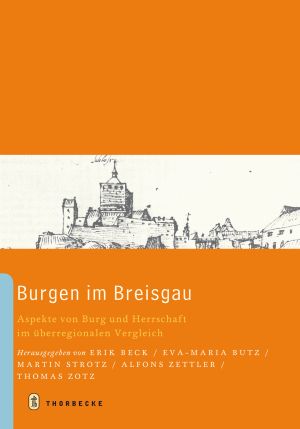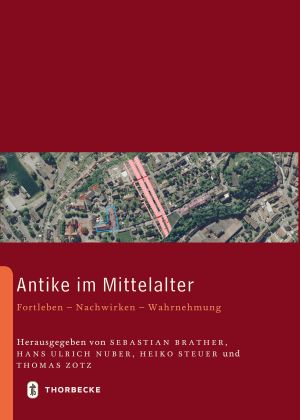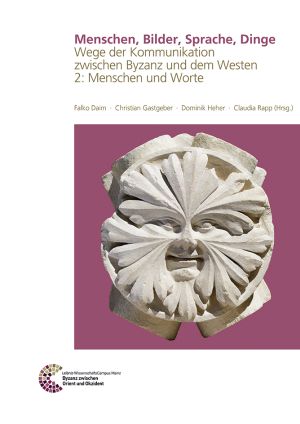Clemens, Lukas
Burgen im Breisgau: Aspekte von Burg und Herrschaft im überregionalen Vergleich
Scholars from several nations and disciplines met in March 2009 in the former Cluniac Priory of St. Ulrich near Bollschweil to discuss aspects of medieval castles. The invitation was extended by the project group "The Castles in Medieval Breisgau" at the Universities of Dortmund and Freiburg i. Br., which aims at a complete survey of the castles of an old medieval landscape. At the conference, the results of many years of research were placed in a scientific context and compared on a supra-regional level.
Antike im Mittelalter. Fortleben, Nachwirken, Wahrnehmung: 25 Jahre Forschungsverbund »Archäologie und Geschichte des ersten Jahrtausends in Südwestdeutschland«
A new, preferably unbiased view of spatial structures proves to be a decisive prerequisite for freeing research from rigid assumptions and models. This makes it possible to replace previous and necessarily highly simplified ladder counts with complex reconstructions. Beyond large lines, spatial relationships and structures prove to be flexible and changeable. The contributions collected in this volume underline how different approaches and perspectives can be, even if they deal with the seemingly self-evident "space". In this opening beyond deterministic concepts and conceptions of space, which geography has long since completed, there are new opportunities for archaeological and historical studies.
Menschen, Bilder, Sprache, Dinge: Wege der Kommunikation zwischen Byzanz und dem Westen 2: Menschen und Worte
In 2018, the Roman-Germanic Central Museum Mainz presents in cooperation with the Schallaburg, the splendid Renaissance castle near Melk (Lower Austria), the exhibition »Byzantium & the West: 1000 forgotten years «.
Both Byzantium and the European West spring from the Roman Empire, but as early as Late Antiquity experience different developments. While the Roman Empire continued to exist in the East and passed seamlessly into the Byzantine Empire of the Middle Ages, pagan took its place in the West: the kingdoms of the Goths, Vandals, Anglo-Saxons, Lombards and Franks. Although Byzantium was respected or accepted as a major power by the other European entities for at least 800 years, territorial conflicts, disputes, and cultural differences quickly emerged. In addition, communication became increasingly difficult - in the "orthodox" East, Greek was the common language, while in the "Catholic" West, Latin was the lingua franca. Differences in liturgy and questions of belief intensified the disparities or were even (religio-) politically underlined to emphasize dissimilarity. But one still continued to admire "wealthy Constantinople" and the Byzantine treasures - among them the magnificent silks, ivory reliefs, technical marvels, plentiful relics and magnificent buildings.
The change came in 1204 with the conquest and plunder of Constantinople by the Crusaders. For the already weakened Byzantine Empire, this catastrophe meant a completely new situation as an empire in exile, whose emperor and patriarch had to flee to Asia Minor. Across much of the former European Byzantine Empire, crusader states spread; Venice and Genoa, which had previously been strongly present as trade powers under special treaties, became major determinants of the western powers in the East.
On the occasion of this exhibition, two accompanying volumes with a total of 41 contributions concerning the varied and changing relationships between the Latin West and the Byzantine Empire are being published. The volumes are structured according to the media of communication: people, images, language and things. They collect contributions from renowned scientists with archaeological, art historical, philological and historical priorities. Several overviews and detailed studies are drawn from research projects of the Leibniz- ScienceCampus Mainz: Byzantium between Orient and Occident, as well as the focus on Byzantine and medieval research of the Austrian Academy of Sciences in Vienna.









